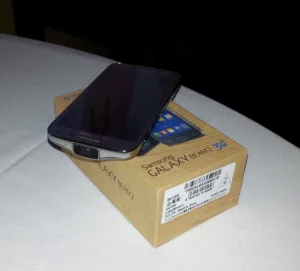We took the opportunity to visit with LED makers Osram and Luminus in the Westgate at CES 2015. These two companies supply many of the high power LEDs used in LED projectors. But the LEDs have other uses as well, which we learned a little more about at CES.
In projection, all-LED devices now top out at around 1500 lumens (well, Sim2 claims 2,000 – Man Ed), but within 2 years, DLP solutions could reach 2500 lumens. While this is not a lot of light compared to projectors using different lighting engines, it is a significant increase for this class of projector – and it will make these tiny projectors more appealing in their target markets. The focus in this market remains on improving the lumens/Watt measure of the LEDs and projection engines.
Luminus noted in our conversation that they have been acquired by a Chinese company called Sanann and they have now transferred and closed their Massachusetts manufacturing plant. This was a difficult decision, but necessary to stay cost competitive. Sananna makes smaller, lower power LEDs for lighting applications, so integrating the high power Luminus devices into this production capability will help to lower costs, while providing higher power LEDs for current customers.
Luminus will also invest and develop other specialty markets that require high power LEDs. One is the stage lighting market. Luminus has developed a new RGBW LED to serve this market to replace spot and other wash lights offering a range of colors and high CRI values. Osram has a similar product and is also focused on this market.
Luminus also has a line of UV LEDs that are used in medical applications, instrumentation and life sciences. This is likely to get more attention going forward too.
At Osram, we saw a new phone with integrated pico projector that we were not aware of. This is the follow on to the Samsung Galaxy Beam and is called the Beam 2. It is sold only in China right now but is so slim and sleek you hardly know it has a projector. It output 19 lumens and consumes 1W of power, but the engine can produce 30 lumens (limited by the small lens in the Beam 2).
Osram was also showing the HUD developed by TI in its suite (TI Prepares DLP-based HUDs for Automotive Integration). They supply the green LED that has a phosphor converter on top. Osram supplies white LEDs to HUD manufacturers who use LCDs as well.
Another application for automotive was a segmented headlight. This is a novel idea to use a series of white LEDs and optics such that each LED is individually addressable. Perhaps 40 LEDs were integrated into the prototype headlight demo that allows the various LEDs to be turned on and off to do headlight steering and high/low beams. This seems like a very useful idea.
Osram is also developing an IR Laser at 905 nm that can be used with LIDAR systems in automobiles to perform automated braking if the driver does not react. Current solutions are $150-$200 but they think they can field a solution for about $60.
The company is also developing a camera that has both visible and IR response and is looking at the driver. The IR is used to help assess driver drowsiness to help sound an alert.

